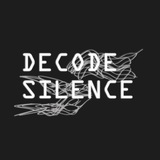Media is too big
VIEW IN TELEGRAM
decode silence team is preparing to release a new device for exploring inaudible domains. This device is a prototype of the Ultrasonic Heterodyne Receiver (USHR). It is designed to detect sources from 20kHz to 220kHz and demodulate them to audible frequencies, focusing on the microscopic and ultrasound domains.
Inspired by bioacoustics research into inaudible ultrasonic signals, the decode silence team has developed a device to detect ultrasound vibrations.
Ultrasonic Heterodyne Receiver (USHR) is designed to explore the world of microscopic sound sources, which are beyond the range of human hearing.
There are numerous ultrasonic sound sources, including the natural world of bats, insects, and frogs, as well as the technological realm of laptops, cars, and other devices that emit ultrasound.
Additionally, the USHR is a great tool for recording high-frequency elements of a soundscape, such as leaf rustling, water splashing, and more. Using the sensor, you can highlight and isolate quiet sounds, revealing all their texture.
Heterodyne principle allows for real-time signal reception with the ability to repitch. For instance, signal with a frequency of 22 kHz can be demodulated at both of 12 kHz and a lower one, like 100 Hz.
For more information contact us via @decodesilencebot
Ultrasonic Heterodyne Receiver (USHR) is designed to explore the world of microscopic sound sources, which are beyond the range of human hearing.
There are numerous ultrasonic sound sources, including the natural world of bats, insects, and frogs, as well as the technological realm of laptops, cars, and other devices that emit ultrasound.
Additionally, the USHR is a great tool for recording high-frequency elements of a soundscape, such as leaf rustling, water splashing, and more. Using the sensor, you can highlight and isolate quiet sounds, revealing all their texture.
Heterodyne principle allows for real-time signal reception with the ability to repitch. For instance, signal with a frequency of 22 kHz can be demodulated at both of 12 kHz and a lower one, like 100 Hz.
For more information contact us via @decodesilencebot
Media is too big
VIEW IN TELEGRAM
recording evening cicadas in low-pitched demodulation settings with USHR
Media is too big
VIEW IN TELEGRAM
sound of smoldering and burning birch bark demodulated with USHR
«Extended field recordings techniques workshop» with decode silence instruments in Experimental sound laboratory Dom Radio
ph: Sergey Misenko
ph: Sergey Misenko
build your own decode silence instrument at Magnetic Antenna workshop in Experimental sound laboratory Dom Radio
ph:
Alexey Bogolepov
ph:
Alexey Bogolepov
